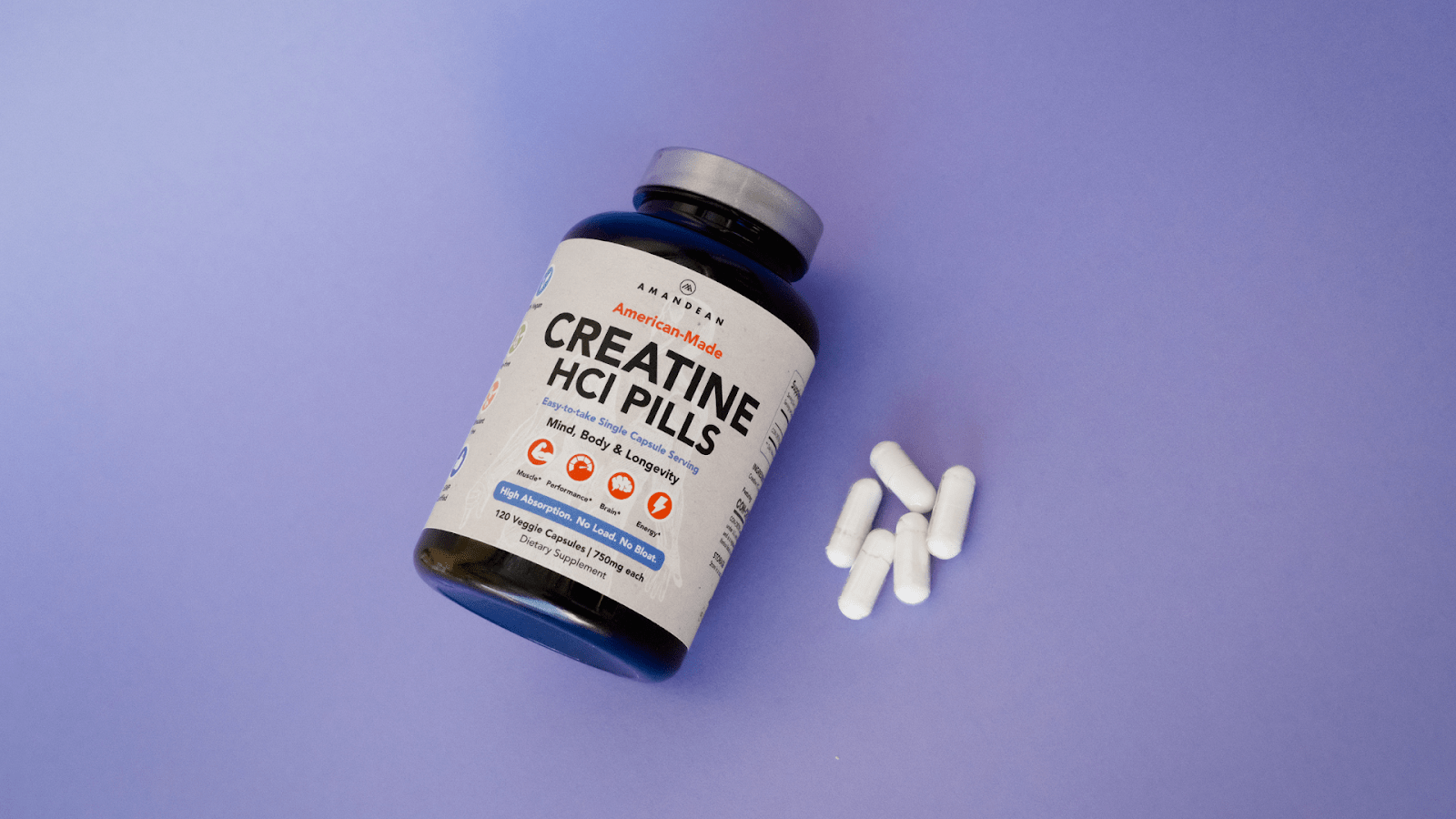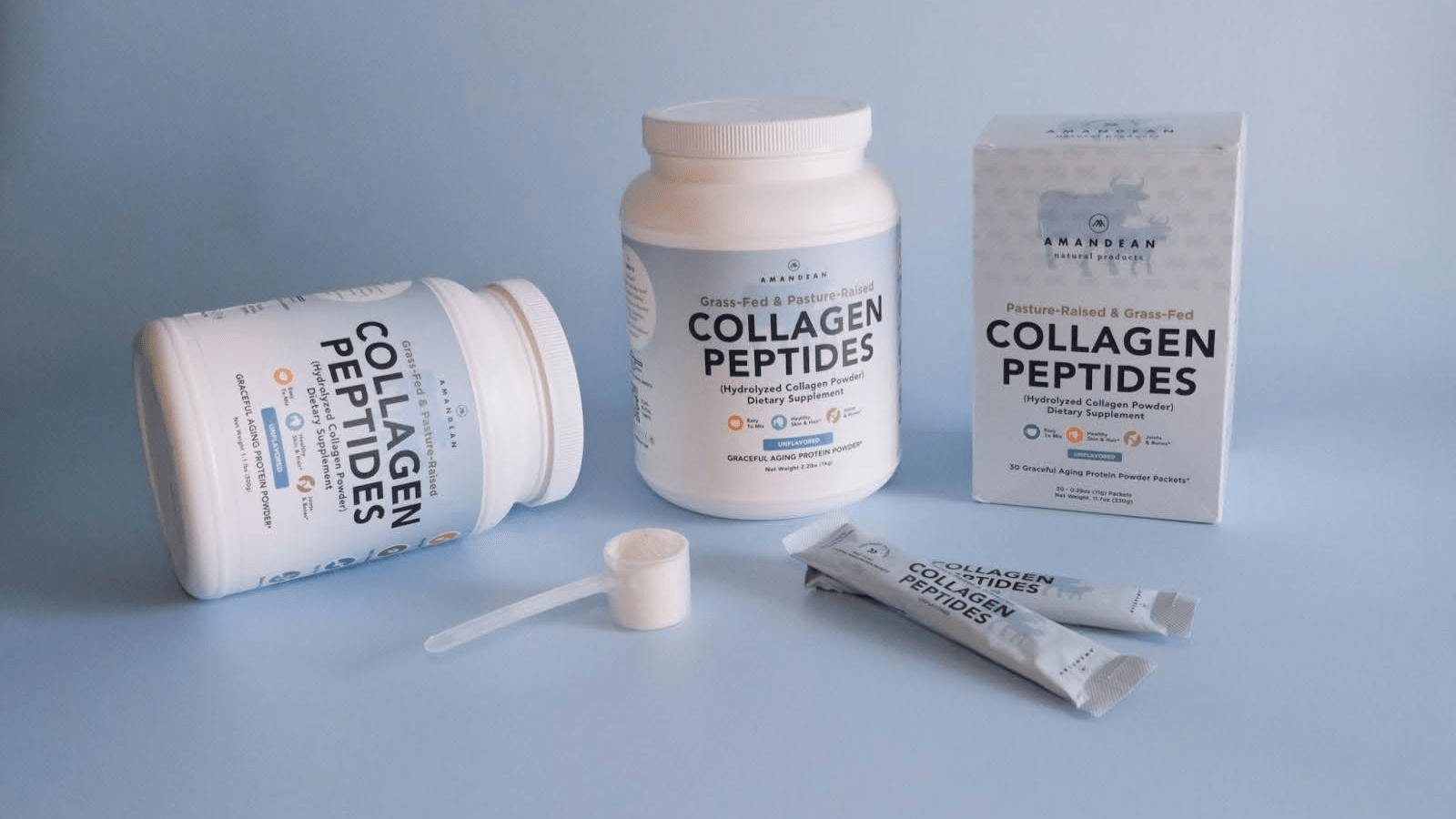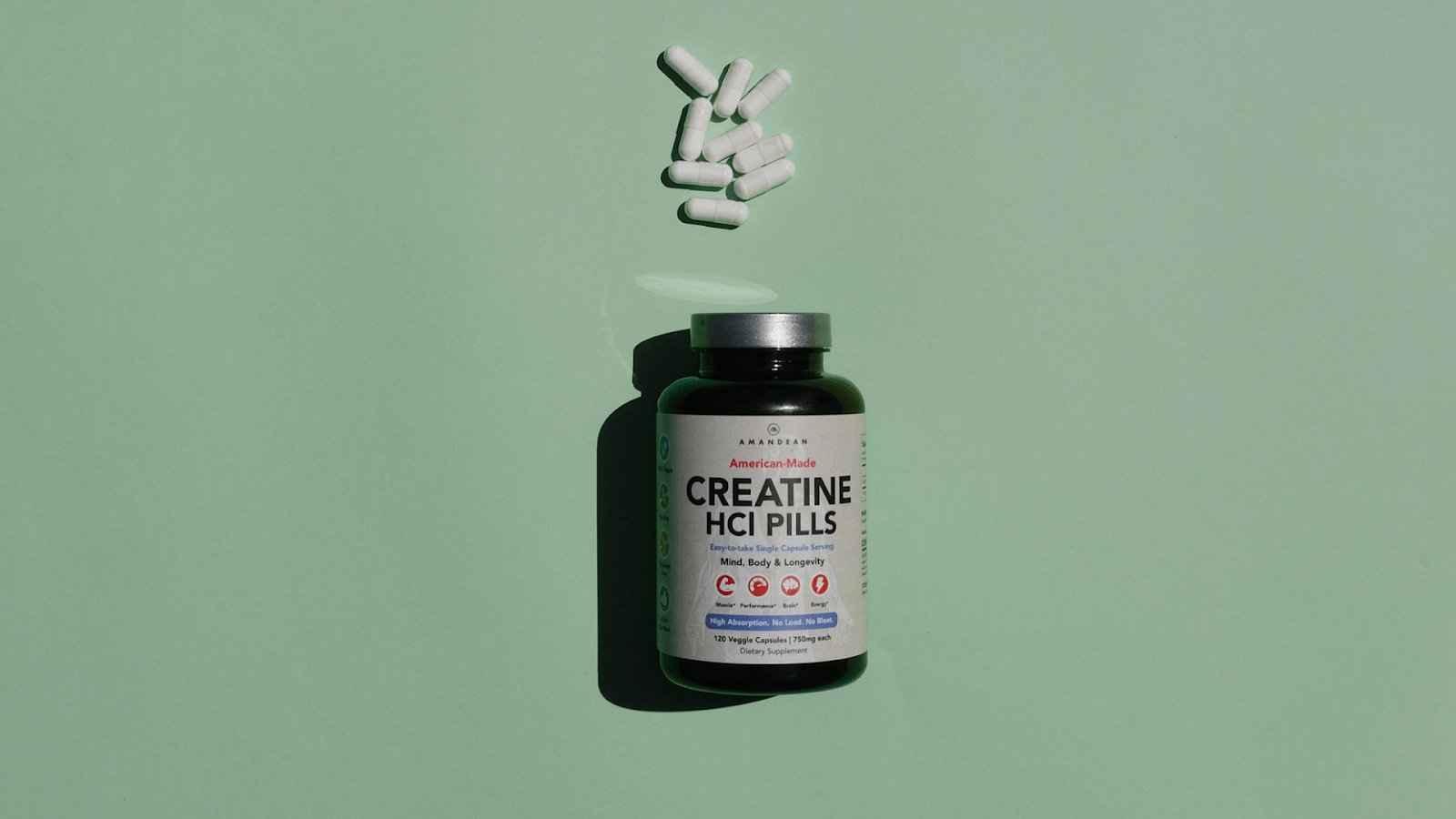Your Cart is Empty

November 17, 2020 10 min read
When you think of muscle building, you may assume that it means going harder in the gym. While it is correct that working out is an important part of building lean muscle, diet plays an imperative role that can not be overlooked. The popular 80/20 rule refers to the importance of diet (80%) and workout (20%). However, many argue that both are important, perhaps equally. A poor diet can not only cause a multitude of health problems but can and will lead to excess body fat. A poor diet can also result in less energy when it comes time to work out. On the other hand, eating perfectly healthy may help manage body fat, however, without the support of intentional exercising, you won't strengthen the muscles enough. Either way, what you put out is important and so is what you put in. Today, let’s talk about how to dedicate your mindset and lifestyle, specifically your diet, to building lean muscle.
Lean muscle is more than just a gym-rat buzz term. Lean muscle refers to the muscle that does not have a lot of fat around it. Losing extra body fat while building and growing muscle at the same time will help you develop lean muscle.

The body has three types of muscles: cardiac, smooth, and skeletal muscles. Skeletal muscles are the most common of the three. They are attached to the bones by the tendons and are responsible for the movement of the body parts. There are 650 skeletal muscles in the human body that contract when they receive signals from motor neurons. These neurons are triggered by the sarcoplasmic reticulum. This process is important because the better a person is at activating the motor neurons and contracting the muscles, the stronger a person becomes, and therefore the heavier lifting they can do.

Believe it or not, the process of muscle growth happens while you are resting. After working out, the body repairs itself by replacing damaged muscle fibers. This is done through a cellular process of fusing muscle fibers together to form new muscle protein strands (myofibrils). The repaired myofibrils increase the thickness and the amount which results in muscle growth (hypertrophy). When the rate of muscle protein synthesis is higher than that of muscle protein breakdown, muscle growth happens (Leyva, John. "How do Muscles grow"). In order to add muscle to your muscle cells, your body relies on satellite cells to add more nuclei to the muscle cells and therefore contribute to the growth of myofibrils.

It is important to note that building lean muscle is not about weight loss, but reducing fat and building muscle. This is important, because if you focus on losing weight, you may feel defeated when you realize that as you build muscle, your numbers just aren’t going down. Muscle tissue is denser than fat tissue, therefore the more muscle mass you gain the more you tend to weigh. There is often confusion about the number we see on the scale vs. how our skinny jeans fit us. Weight fluctuates throughout the day, week and the month depending on your hormones, water retention and other factors. Lean muscle weighs more than fat but takes up less space. So even though weight might not be decreasing, with increased lean muscle and fat loss, body size becomes smaller.

Weight lifting: Lifting weights or bodyweight exercises help build lean muscle mass. Lifting until you have completely tapped out is the key to making progress. While that may sound intimidating, the purpose is to push hard so that you signal the muscle fibers to grow.
Even though cardio is good for your overall health, implementing it in every workout could slow down your muscle growth. Too much cardio will hamper your muscle gain by slowing down your recovery and by burning up calories that your body needs for the process of building muscle. To avoid this, experts suggest doing a HIIT workout 2-3 times a week for 30 minutes to control the intensity so that you aren't losing the muscle weight you've gained. (Nilson, Nick. "Weights or Cardio")

Developing an effective meal plan is essential for building lean muscle. When you are attempting to gain muscle while shedding a few pounds, a strategy helps to bring the two goals together.
When you eat, your body converts surplus energy into fat and stores it for the future. The body will hold the fat in storage unless it doesn’t get enough energy to keep things going. If your body goes through a shortage of calories, it will begin to break down fat and convert it into usable energy. If the body remains calorie deficient for long enough, the body will burn fat and lose weight.
Combining a healthy mix of calories while actively engaging in intentional exercise allows you to achieve fat loss and lean muscle building. ("The Best 5 exercises for building lean muscle." Neat Nutrition.)

Let’s start by clarifying what macronutrients are.
Macronutrients provide the energy needed to maintain body functions and carry out the activities of daily life. The three powerful macronutrients are protein, carbohydrates and fat.

Protein is crucial for the human body because it helps with growth, repair of tissues and creates hormones and enzymes that ultimately affect our immune system. The DRI is 0.8 grams of protein per kilogram of bodyweight (Gunars, Kris. "Protein Intake", Healthline). Protein is also used as an energy source. This is why you may see so many people at the gym drinking a protein shake before or after a workout.
Carbohydrates provide your body with the most significant source of energy. Doctors recommend that carbohydrates should supply 45-65% of our total daily energy needs. For example, cellulose plays a very important role with our large intestine because it assists with our body waste. Even though the carbohydrate itself is non-digestible it’s essential for the human body.
There are a variety of macronutrient diets for you to choose from. A popular one is the 30-30-40 diet which suggests you intake 40 percent carbohydrates, 30 percent protein and 30 percent fats.Another protein growth diet you can try is the paleo diet. A paleo diet is a dietary plan based on foods similar to what might have been eaten during the Paleolithic era. A paleo diet typically includes lean meats, fish, fruits, vegetables, nuts and seeds — foods that in the past could be obtained by hunting and gathering. If you’re not into the historic diet we can move to one that’s considered the most modern, keto. The ketogenic diet (or keto diet, for short) is a low-carb, high-fat diet that offers many health benefits. It involves drastically reducing carbohydrate intake and replacing it with fat. This reduction in carbs puts your body into a metabolic state called ketosis. And, as with any diet, it will only work if you are consistent and stick with it in the long term.
The journey to increase one’s muscle mass is different for everyone, simply because as human beings we come in different shapes and sizes. It’s helpful to know the calorie intake you need to maintain your current weight. If that’s an area that may be a struggle, here are some apps that can help you track your calorie intake. Myfitnesspal, Fooducate, Lifesum, Loseit and Jawbone. The easiest way to manage caloric intake is to simply keep track of it.
If you’re looking to add calories to your diet, this should be a gradual process, otherwise, it will be difficult. Start by adding 5 to 10% to support additional lean muscle growth. As you get into the habit of adding 100 calories to your food intake it gets easier to manage and track. As mentioned before, everybody is different and if you’re someone who struggles with weight gain, then it’s appropriate to add more. Note that your increase in calories should be no more than 500 calories a day, otherwise you’ll experience a rapid increase in weight, which can be unhealthy for your heart, joints, and bones.
Protein is one of the most essential components to gain lean muscle! According to the McKinley Health Center, the body requires large amounts of macronutrients to sustain life, hence the term “macro”. Protein fuels muscle mass which is why it’s one of the top three elements to build muscle, along with carbohydrates and fats. It contains all the essential amino acids needed to build muscle. 22% of people who drink whey protein have a higher increase in their muscle strength (Van De Walle, Gavin. 5 Proven Benefits of BCAAs). Not only is it important for muscle gain but it also benefits your immune system and your metabolism.

It is believed that people need at least one gram of protein per pound of body weight per day, but The Institute of Medicine recommends that people consume 10-35 percent of protein a day. Protein also increases satiation, which helps us feel full after a meal. Think of protein as a triple threat: it speeds your metabolism, slows your appetite and helps you maintain muscle.
For our vegan and vegetarian friends, there are alternatives to intake protein beside meat. Adequate protein intake includes supplements like collagen or plant-based sources like nuts, soy, beans.
Fats and carbs usually have a bad reputation. Typically you hear people express they want to eliminate carbs and fats out of their diet, but they can actually benefit your muscle growth. It’s recommended that we should consume 20-35% of healthy fats and oils. Fats are needed to supply fatty acids because the body needs but can’t produce things like omega-3 (Macronutrients, Science Learning Hub.) They also assist with the absorption of vitamins A, D, E and K. Good fats are considered unsaturated fats. These include olive oil, avocado, nuts and canola oil. Unhealthy fats are saturated fats, which are foods like butter, cream and meat. It’s said if you can replace your saturated fats with unsaturated fats in your daily meals, you are most likely to increase your lean muscle growth.
Carbs are an important fuel for your muscles and can prevent muscle breakdown. Foods that contain carbohydrates convert into glucose after digested. Glucose is the main source of energy for not only our bodies but for our brains as well. There are two kinds of carbohydrates, complex and simple. Complex carbohydrates are made up of sugar molecules and are found in foods like peas, beans, whole grains and vegetables. Simple carbohydrates break down more easily than complex carbohydrates and are found in foods like fruits, milk and milk products. They can also be found in processed refined sugars like candy, syrups and soft drinks. The difference here is that the glucose from refined carbohydrates can get into the bloodstream faster than the glucose from whole grains. This is why doctors recommend eating whole-grain meals.
Who doesn't like to receive a nice compliment on their body? No, we don't mean the creepy kind. As many know, to keep your body looking healthy, especially as you age, you need to be consistent! It’s really important to work on multiple muscle groups at the same time and also to make sure your diet aligns with your workout so that you can deliver the best results for your body. Protein intake is just as essential and will help you reach those muscle mass goals more quickly and easily. Before chugging down a delicious protein shake, here are some exercises to help with strength training that tackle muscles across your entire body and can help you gain lean muscle.
Doing these exercises 3-4 times a week is sufficient to increase your muscle mass. There are also workout programs that assist with weight training techniques and share details on how certain movements can help you increase your body weight (Stephens, Carissa., "The No BS Guide to Building Lean Muscle", Healthline.) In addition, adding whey protein or collagen shakes to your post-workout will allow you to increase your muscle weight and help your muscles recover. Make sure that you are prioritizing rest days as well. It’s important to let your muscle recover from heavy workouts or else you could pull or otherwise damage a muscle.
Nutrition is a critical factor when it comes to gaining lean muscle. Of course, with the help of a great workout plan, your body can reach the goals you are aiming for. Experts say achieving these goals start with your diet, not dieting. Increasing your muscle gain is all about adding more calories to your meals. It’s best to eat foods that naturally contain all 9 amino acids --- these make digesting protein easier and healthier.
Try to incorporate these foods into your daily meals. The key to increasing your lean muscle growth is eating foods that contain healthy fats. This doesn’t mean you can’t have ice cream every now and then. In fact many people indulge in a ‘cheat meal’ once a week, where they simply eat what they want. According to a Men’s Health article, a rule that helps many bodybuilders with muscle growth is that they eat what they want 10% of the time. 90% of their diet contains healthy fats and proteins to help increase their muscle mass (Schuler, Lou., Aragon, Alan., and McDermott, Scott. "The Lean Muscle Diet", Men's Health) As long as your take the proper precautions when having cheat meals, having a balance of both is doable.
The popular 80/20 rule refers to the importance of diet (80%) and workout (20%).
The body has three types of muscles: cardiac, smooth, and skeletal muscles - the latter being the most important.
After working out, the body repairs itself by replacing damaged muscle fibers.
Building lean muscle is not about weight loss, but reducing fat and building muscle.
Lifting weights or bodyweight exercises help build lean muscle mass. Too much cardio for some people can jeopardize the process.
Combining a healthy mix of calories while actively engaging in intentional exercise allows you to achieve fat loss and build lean muscle.
Protein is crucial for the human body because it helps with the growth, and repair of tissues and creates hormones and enzymes that ultimately affect our immune system.
Take our quiz and find which supplements your body is craving.


October 17, 2025 8 min read
Find out why creatine is better for vegans! Boost your wellness game and unlock peak performance with Amandean's premium supplements today.

October 16, 2025 7 min read
Learn whether collagen in coffee is just another wellness fad. Examine the facts, benefits, and how to use collagen in coffee for beauty and joint support.

September 22, 2025 9 min read
Unlock the full benefits of creatine for women. Boost energy, beauty, and brainpower with Amandean’s clean formulas.